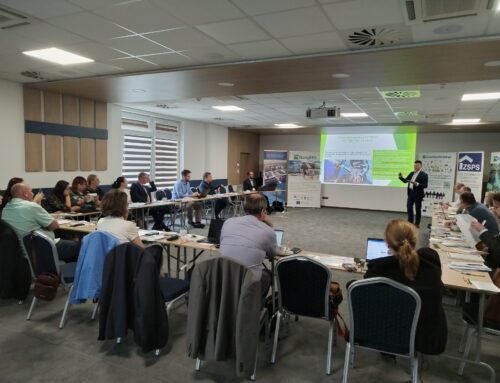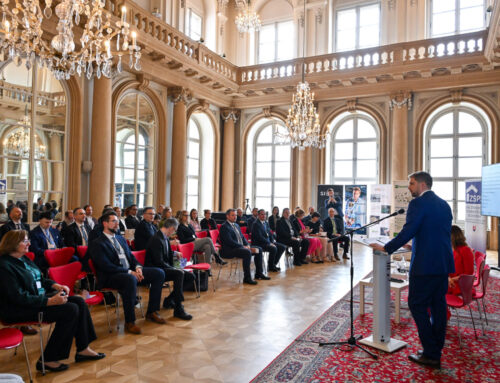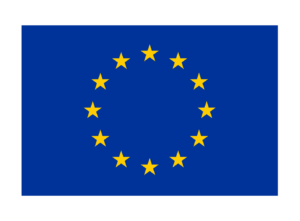On 8 December 2022, the fourth meeting of the Slovak Round Table took place at the headquarters of the First Building Savings Bank in Bratislava. The meeting was opened by the moderator Stanislav Laktiš from SIEA. He briefly described the purpose of this meeting, explained the objectives of the project and the organizational structure of the Round Table. The opening word on behalf of the project coordinator, the Association of Construction Entrepreneurs of Slovakia, was given by the President Pavol Kováčik. He stressed the need to increase the capacity of the construction industry in terms of workforce and to improve the training of new construction workers and increase the attractiveness of working in the construction sector. The Green Deal for Buildings project and the recently launched BUS DoubleDecker project can help with this. On behalf of SIEA Director General, Mr. Stanislav Jurikovic, the moderator Mr. Laktiš welcomed the participants and highlighted 3 points in achieving a decarbonised building stock – financing of complex solutions, innovations and behaviour of building users. One of the funding instruments is the ESIF, which SIEA administers and in the new programming period takes into account not only savings, but also, for example, the quality of the indoor environment and waterproofing measures. Regarding the behaviour of building users, he highlighted the just-launched campaign “Let’s save for us”, launched by SIEA and the Ministry of Economy with the aim of changing the behaviour of the inhabitants in order to reduce energy consumption and thus make Slovakia less dependent on imports of fossil fuels from Russia.
The agenda was divided into four thematic blocks:
- Support tools for building renovation;
- Actions of the Energy Efficiency Financial Institutions Group (EEFIG);
- One-stop-shop for building renovation.
In the first part, Mr. Stanislav Laktiš from SIEA made a contribution on the topic of support instruments for building renovation. In his contribution he discussed Individual Building Renovation Plans and Digital Passports. Around 75% of the EU building stock is not energy efficient and 75% to 85% of it will still be in use in 2050. One of the tools that can help to develop building renovation, and especially with high initial costs, is the gradual in-depth renovation of buildings. In order for such renovations to be carefully planned, i.e. to avoid a lock-in effect, the building must have an individual renovation plan and a digital passport. The individual building renovation plan presents the renovation as a home improvement plan. It is based on the needs and specific situations of the user. It specifies each step of the renovation, links the measures and this leads to a better understanding and acceptance by the owner. Very importantly, it helps to better set up the financing of the renovation of the building.
In order to meet the goals towards climate neutrality, there is a need to move away from Energy Performance Certificates (EPCs) towards a holistic approach of the building passport concept. It is a one-stop-shop data and information centre that supports building owners and service providers by facilitating the recording, linking, transferring and sharing of data and building information between stakeholders across life cycle phases. It also contributes to a better understanding of the design, composition, management, operation and end-of-life of buildings, increases transparency and trust, improves political and financial decision-making and enables optimal use of resources. The digital passport is already included in the recast of the EHB Directive, which makes its implementation mandatory for Member States. A European approach is very important as it will ensure implementation and create a harmonised approach. Governments should lead by example and make it compulsory for public buildings to have a digital building passport and then roll it out to other building typologies and market segments. Digital passports will play a very important role in the digitalisation of the building sector because, in addition to providing a database of comprehensive building data, they will assist in connecting buildings to energy smart grids. An example of a digital passport is provided by the ALDREN project. The participants agreed on the need to digitise and move to a digital building passport as well as to create an individual renovation plan, therefore they endorsed the proposed measures to implement both concepts.
The second part of the meeting was devoted to the implementation of the measures of the Energy Efficiency Financial Institutions Group (EEFIG), which were presented by the project partner and head of the expert group Financing Sustainable Investments, First Building Savings Bank, and its representative Jozef Plško. The second part started with a presentation by Mr. Václav Šebek on the topic of reducing the risks of financing energy saving projects, which is the focus of the Triple A project. The risks of energy efficiency projects need to be identified, evaluated and mitigated during their design and this can be helped by the use of appropriate metrics. Reducing risk has a number of benefits such as increasing the availability of attractive projects for investors, reducing investor uncertainty, the possibility of engaging private capital, and the predictability of evaluation results. The Triple A project therefore provides tools to assess and mitigate risks. It provides tools such as a typology of risk reduction strategies, benchmarking, project scorecards, an experience database and the Triple A tool.
Risk mitigation strategies include:
- Reducing/eliminating risk e.g. by using standardised processes such as GES/EPC or Performance design and build;
- Transferring risk to a third party through, for example, insurance or an energy service;
- Acceptance of risk – the potential impact of the risk is acceptable in the context of the project;
- Avoiding risk by using quality control procedures to ensure that detection of increased risk above a selected threshold will lead to the termination of the project.
The risks can be divided into 5 categories:
- Financial – the risk factor is the creditworthiness of the borrower. This factor can be reduced by a thorough examination of the borrower’s creditworthiness, aggregation of projects, grants, subsidies, etc;
- Energy markets and regulation – volatility in energy prices and taxes and permitting processes are risk factors. These can be mitigated by hedging (forward contracts, futures contracts, swaps, option contracts), fixed price contracts, and comprehensive review of the proposed project. Regarding permits, they should be obtained before the project starts;
- Economy – the risk factor is the poor macroeconomic situation. It can be mitigated similarly by hedging and long-term interest rate fixing;
- Consumer behaviour – a risk factor is the so-called rebound effect. To mitigate the risks of consumer behaviour it is advisable to: consume less, differently and more efficiently, inform about energy taxes, price regulation, subsidies and tradable permits, green taxes, EE standards, design, evaluation and effectiveness of public policies, new business models, awareness raising, etc;
- Technologies and their design and operation – risk factors include technical complexity, poor quality of initial savings assessment, implementation of poor quality equipment or poor project design. Appropriate strategies to mitigate risk are energy savings guarantees or insurance, diagnostics, quality guarantees, equipment insurance, statutory insurances;
Mr Jozef Plško then presented the EEFIG measures. EEFIG is a group of financial institutions for energy efficiency (established in 2013, an initiative of the EC and the United Nations Environment Programme Finance Initiative (UNEP FI). It acts as an open dialogue and working platform for public and private financial institutions, industry representatives and sector experts. The EEFIG aims to identify barriers to long-term financing of energy efficiency (not only for building renovation, but more broadly) and to propose policy and market solutions to increase investment in energy efficiency. EEFIG has developed two specific tools:
- De-risking Energy Efficiency Platform (DEEP) – the largest pan-European open-source, technical and financial performance database. It contains more than 15,000 energy efficiency projects in industry and building renovation. The aim is to help project developers, financiers and investors better assess the risks and benefits of energy efficiency investments in the EU;
- Underwriting Toolkit (EEFIG Underwriting Toolkit) – assessing the value and risk of energy efficiency financing and was launched in June 2017. The aim is to help financial institutions increase investment in energy efficiency improvements;
The third part was dedicated to a one-stop-shop approach to support the renovation of buildings. The measures were presented by the President of ZSPS, Mr. Pavol Kováčik. This approach emphasises the complexity of the services offered and the overall approach to building renovation by both the public and private sector. The aim of the measure to create a one-stop-shop for building renovation support is to set up and operate regional/national contact points/centres offering a comprehensive service from technical, financial to legal advice, procurement and quality assurance of works; this would be for public and privately owned buildings; residential and non-residential buildings should be included. For such one-stop-shop to work, a self-sustaining business model needs to be developed. In it, services will be integrated through dedicated operators (new public or public/private entity or mandated private operators) and/or through improved coordination between existing local actors. This model must be economically viable and aimed at self-sufficiency in the medium to long term.
The second measure aims at developing financial innovations to secure the necessary investments in building renovation. This involves the development of innovations in three areas:
- Financial instruments such as financial forfaiting; structured PPP programme for guaranteed energy services; Public-Private Debt Fund; one-stop-financing; soft loans; participatory financing: crowdfunding credit, crowdfunding equity, community energy projects; mezzanine financing; on-bill financing using green vouchers; green mortgages;
- Tax instruments: transferable tax credits (Super Ecobonus); On-tax financing;
- Changes in legislation enabling the implementation of these financial innovations, e.g.:
- PPPs in building renovation;
- PPP in the field of guaranteed energy service;
- Tax financing instruments;
- Transfer of the burden of the loan for in-depth renovation from the owner to the property.
Both measures were endorsed by the Roundtable and included in the Roadmap. All the measures endorsed at the fourth meeting of the Slovak Round Table can be found on this page.






